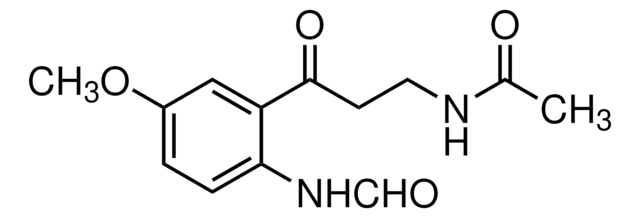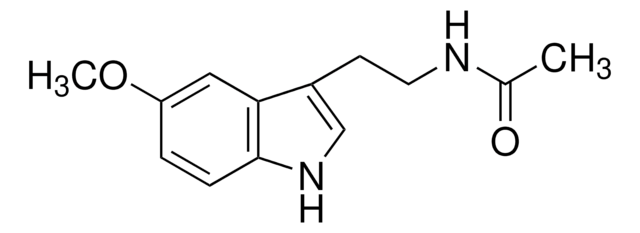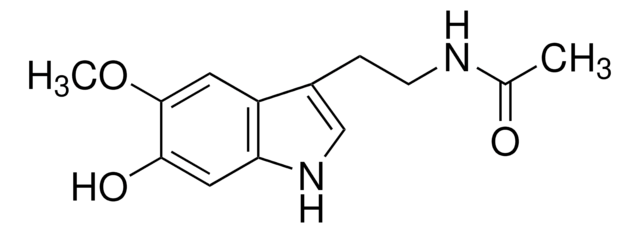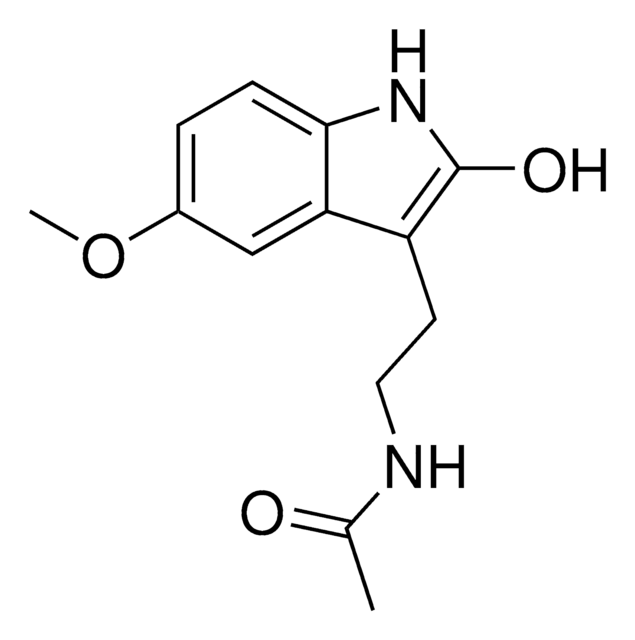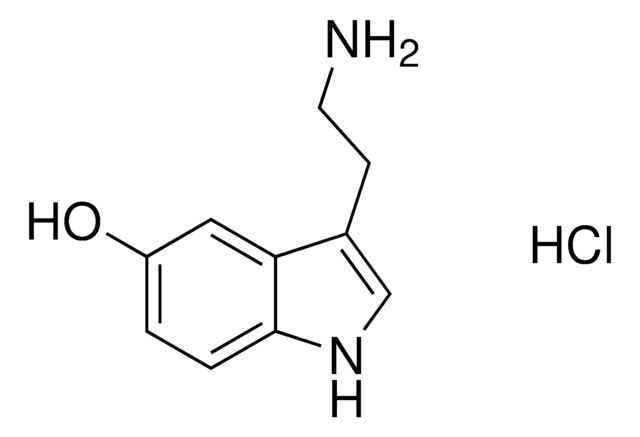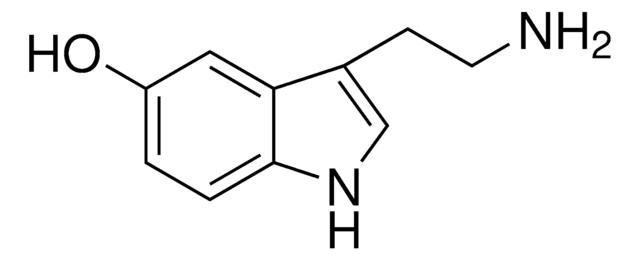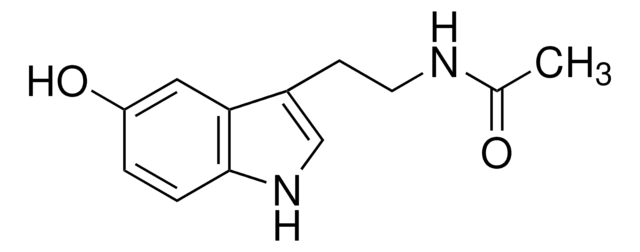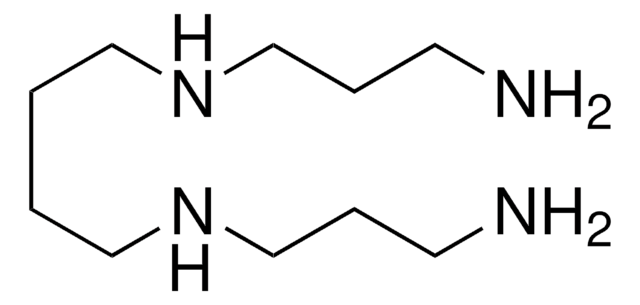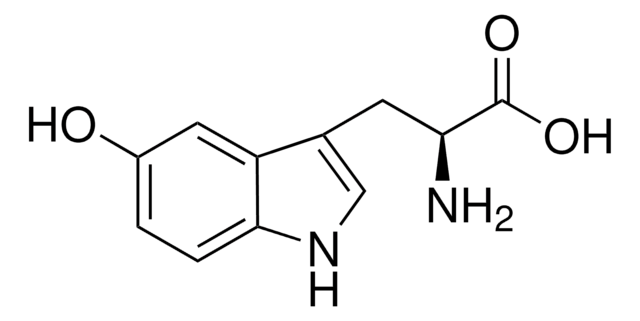All Photos(1)
Synonym(s):
N-[3-(2-Amino-5-methoxyphenyl)-3-oxopropyl]acetamide
Empirical Formula (Hill Notation):
C12H16N2O3
Recommended Products
Quality Level
Assay
≥95% (HPLC)
form
solid
mp
88—91 °C
storage temp.
2-8°C
SMILES string
NC1=C(C(CCNC(C)=O)=O)C=C(OC)C=C1
InChI
1S/C12H16N2O3/c1-8(15)14-6-5-12(16)10-7-9(17-2)3-4-11(10)13/h3-4,7H,5-6,13H2,1-2H3,(H,14,15)
InChI key
RJQIZOKNUKRKTP-UHFFFAOYSA-N
General description
Melatonin and its metabolites are being studied for their antioxidant properties and their protective effects against oxidative stress in both mammals and in plants. N1-Acetyl-5-methoxykynuramine (AMK) and its direct precursor N1-acetyl-N2-formyl-5-methoxykynuramine (AFMK) are two metabolites that contribute to the antioxidant properties of melatonin.
Application
Metabolomics research
Other Notes
For additional information on our range of Biochemicals, please complete this form.
Signal Word
Warning
Hazard Statements
Precautionary Statements
Hazard Classifications
Acute Tox. 4 Oral
WGK
WGK 3
Flash Point(F)
Not applicable
Flash Point(C)
Not applicable
Regulatory Information
新产品
Certificates of Analysis (COA)
Search for Certificates of Analysis (COA) by entering the products Lot/Batch Number. Lot and Batch Numbers can be found on a product’s label following the words ‘Lot’ or ‘Batch’.
Already Own This Product?
Find documentation for the products that you have recently purchased in the Document Library.
Hikaru Iwashita et al.
Journal of pineal research, 70(1), e12703-e12703 (2020-10-31)
Melatonin (MEL) has been reported to enhance cognitive processes, making it a potential treatment for cognitive decline. However, the role of MEL's metabolites, N1-acetyl-N2-formyl-5-methoxykynuramine (AFMK) and N1-acetyl-5-methoxykynuramine (AMK), in these effects are unknown. The current study directly investigated the acute
Kyoungwhan Back
The Plant journal : for cell and molecular biology, 105(2), 376-391 (2020-07-10)
Melatonin is a multifunctional biomolecule found in both animals and plants. In this review, the biosynthesis, levels, signaling, and possible roles of melatonin and its metabolites in plants is summarized. Tryptamine 5-hydroxylase (T5H), which catalyzes the conversion of tryptamine into
Rüdiger Hardeland
Molecules (Basel, Switzerland), 22(11) (2017-11-22)
Melatonin is catabolized both enzymatically and nonenzymatically. Nonenzymatic processes mediated by free radicals, singlet oxygen, other reactive intermediates such as HOCl and peroxynitrite, or pseudoenzymatic mechanisms are not species- or tissue-specific, but vary considerably in their extent. Higher rates of
Our team of scientists has experience in all areas of research including Life Science, Material Science, Chemical Synthesis, Chromatography, Analytical and many others.
Contact Technical Service